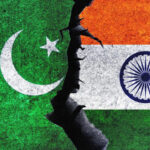This week on Worldview, we discuss the new Quad on the block: Will India’s latest Quad with Israel run into trouble with Iran?
Earlier this month, External Affairs Minister Jaishankar joined Israel FM Yair Lapid in Jerusalem for a video conference with US Secretary of State Antony Blinken and UAE FM Sheikh Abdullah bin Zayed- being called the new Quad in West Asia or the Middle East – as opposed to the other Quad in the Indo-Pacific.
Within a week, New Delhi became the venue for an Israel-Iran spat. After the new Israeli Ambassador Naor Gilon accused Iran of destabilising the region, and indicated that last year’s Abraham Accords, that saw UAE and Israel recognise each other, as well as the new Quad were a result of concerns about Iran, the Iranian embassy in Delhi hit back- calling the Ambassador childish and adventurous, and Israel a murderous regime. While such spats are not uncommon between Tehran and Jerusalem/ Tel Aviv, it is rare to see New Delhi, which has thus far been careful about maintaining good ties with both countries become the setting for the latest round. Some speculation that Iran’s decision to hold a foreign minister’s meeting that didn’t include India was connected with its unhappiness over the new quad as well.
Why are the Middle Eastern Quad and the Indo-Pacific Quad being compared- apart from the fact that they involve four countries:
1. Both Quads have the US and India in them, indicating a degree of strategic closeness
2. While the US would like to see the Indo Pacific Quad as a way to counter China, Israel would like to see the new arrangement possibly as some sort of a counter to Iran
3. Neither is being billed as an alliance – much like the Indo Pacific Quad is largely discussing “soft” subjects like Climate change, Covid vaccines, disaster management, data flows and resilient supply chains, officials insist the Middle Eastern Quad is only meant for economic and infrastructure cooperation.
4. Interestingly, all IP Quad countries take part in the Malabar maritime exercises together, and this year for the first time, Israel’s largest ever Blue flag airforce exercises in October, that include India and US, saw the UAE join as an observer.
5. For India, both Quads involve partnerships with countries relatively far away, with repercussions in India’s own neighbourhood.
There are also some important differences between the two, apart from geography:
1. The IP quad grew out of a 15 year old process, revived in 2017, and grew from coordination between officials, to ministers, and saw a summit only this year. The ME quad has begun with a Foreign Minister level meeting, so is expected to be upgraded much faster.
2. While the IP Quad has a definite strategic focus, that of keeping a Free and Open Indo Pacific, along with the centrality of the ASEAN region in mind, the ME Quad is not at present looking at any strategic focus, and is not involving the rest of the Gulf region in its deliberations.
3. The IP Quad has branched out in a number of different areas needing G2G collaborations, while ME Quad officials say they are presently only looking at economic collaborations, by private companies that will bring together US and UAE financial and knowledge support, with Israeli technical R&D expertise, and India’s manufacturing capabilities.
4. But most importantly: The IP Quad has been strengthened due to India’s tensions with China, and the PLA’s incursions at the Line of Actual Control…but India’s relations with Iran have actually been very strong.
As we discussed in a previous edition of WV India and Iran have close ties for a number of reasons, and India is not going to wish to jeopardise them at present:
– Traditional and historical ties as neighbours, cultural affinities
– Until US sanctions, Iran was a top supplier of oil to India
– India sees Iran as an alternative access route to Afghanistan and Central Asia
– India is part of a trilateral with Iran and Afghanistan to develop Chabahar port
– India and Iran share common concerns about terrorism in Afghanistan
– India’s connectivity dreams to its west lie along the INSTC via Iran
The quad came about when Mr. Jaishankar was in Israel for a bilateral visit, and of course India and Israel relations are very important for a number of reasons
– India and Israel are strategic partners, made stronger by the fact that israel has no ties with Pakistan- Defence trade: India is the largest buyer of Israeli military equipment and Israel is the second-largest defence supplier to India after Russia.
– India and Israel have agreed to grow trade through FTA negotiations
– They have common concerns on terrorism, and a very strong CT relationship
– Agricultural partnership, Israel has its only water attache in India.All in all, the new Quad is very much a work in progress, and it is not at all clear how far the partners really wish to go with the new formation. Remember just a few months ago, the US announced a Quadrilateral with Uzbekistan, Afghanistan and Pakistan as well, which appears to be suspended for the moment. And as we have discussed, India is part of so many other arrangements- with Russia and China, and also Iran, it will be hard to strengthen this partnership without upsetting others.
Finally, India has too much at stake in good ties with Iran and Israel, it must avoid the overlap or clubbing them together in any sphere.





NO COMMENT